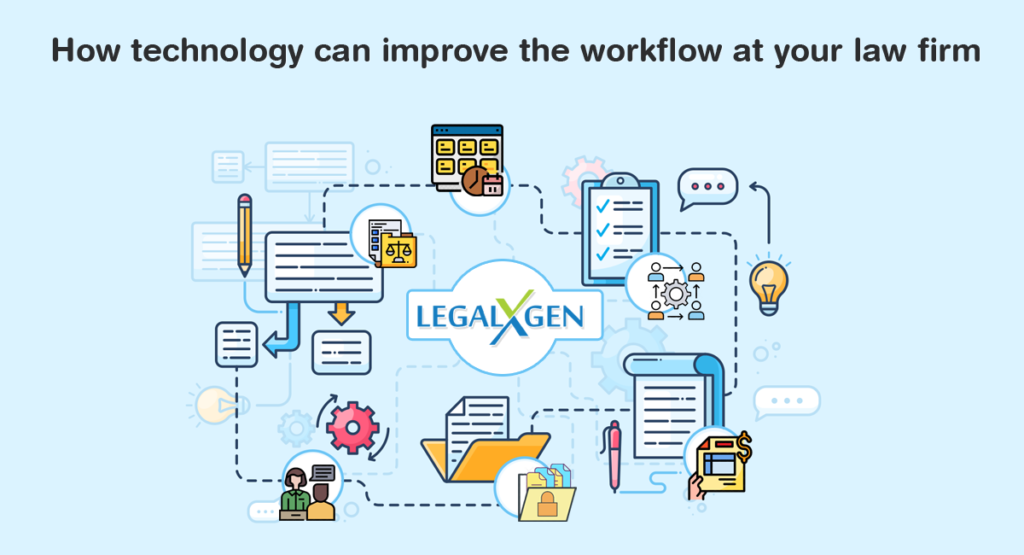There was a time (almost two decades ago) when technology was limited to certain Industries only. At that time technology was considered a luxury and a sophisticated thing.

In fact, the industries which leveraged technology at an early stage have now been many advances and grown to another level in all aspects. Telecom, Healthcare, and Banks are the example of such industries which adapted technology at early and now no need to mention what kind of innovation and growth these industries have achieved.
Let our advance worrying become advance thinking and planning.
― Winston S. Churchill
I really don’t know and in fact, never bothered as well about the ‘bookish definition’ of the technology. For me it’s very simple:
Technology = Optimizes your output, accuracy, and lets you focus on your core job. That’s it!
At Legalxgen we help our clients to implement and adapt the technology. The process is something that is a byproduct of technology. So, it’s just one thing and has many benefits. We have been successful in showing positive results in terms of productivity and growth.
There would be so many things at your law firm on which you might be spending a significant amount of your valuable. You can cut down this time with a lot more accuracy and processes. You cannot implement it completely in one go it has to be done phase-wise.
Let’s now come to the points of how to begin with:
- Believe First
Anything new first needs to be accepted at the psychological level. Unless you don’t believe you cannot leverage the same. It’s the time you have to understand that it’s definitely going to help you in order to scale or grow.
- Identify & Automate
Now it comes to the technology selection.
-
- Do not ever do the mistake of making your own custom solution. It sounds very fascinating, but it sucks lots of time and money both and you tend to deviate from the core business.
- So instead of re-inventing the wheel, identify any existing software which on a high level caters to what you are looking for.
- SaaS is the future. It’s readily available without investing anything in engineering and infrastructure.
- Do not plan 100% automation on your day one. Split it into phases.
Phase 1: Client & Matter, Timesheet
Phase 2: Invoices, Receipts, and Expenses
Phase 3: Documents
Phase 4: CRM and Others
- Adapt It
Just to create the context, remember the days you were learning a bicycle. It was an extra effort, would have caused pain as well but the moment you learn it, the time to travel your distances would’ve been reduced drastically. So, it’s important to have the bicycle first and learn it, then only it suffices the purpose.
In the same way, there’s definitely some learning curve involved to be hands-on with it. We’ve seen many old school people have thoughts that it’s an extra thing which has come-up to their smoothly going routine job. So, initially, it becomes especially important to convince and enforce it at the early stage to bring it into action.
Training needs to be conducted periodically to get it adopted. Don’t plan the training of each and everything in one go instead split it role wise and module wise.
Example:
- Timesheet training is mostly applicable to associates and partners, so just involve concerned members.
- Client, Matter, and Accounts training should be limited to Admin and Accounts, not to all.
- Productivity and MIS should be applicable to Partners and admin.
These are some simple tips we’ve learned with experience. Hope should be helpful to you.

Ashish has 15+ years of experience in Enterprise Applications.
A Technology, Process & Productivity Expert for the law firms from last one decade.
 English
English French
French German
German